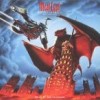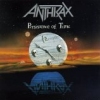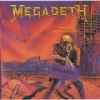Anatomy of a Horror Setting #2-7: Casting About
The schools of magic have been laid out now. A number of questions have been asked and answered. There are always more questions, but now it is time to ask and answer them as they pertain to the actual casting of spells, and the performing of magic rituals. To review the casting of spells requires certain elements. First someone or something has to cast the spell. Then there are components. First and most common are verbal components. These are the magic words and the chants. Then come the somatic or movement components. These are the magic symbols drawn in the air or formed by the hands and the special dances. Lastly are material components. These are the materials to draw circles such as wax, the need for blood in a ritual, and herbs or animal parts.
The first question to be asked before getting into the details of what components are needed for which spells is, are the components required set in stone? This question asks, essentially, is magic rigid and inflexible? Must every single person meaning to cast a specific spell follow the same set of instructions? For that matter, can a spell be altered? On the other hand, can spells be made up on the spot? Can they be modified or expanded? For a horror setting the best answer is that magic is inflexible, and immutable. Magic as a changeable thing leads to a brighter view perhaps, or at least an adventurous mood. Certainly though, experimentation could be given dark complications, and frightening costs, to offset the pioneering feel of blazing new magical paths.
Now that the components are set, they can be determined. The verbal components of a spell can be in the caster's native language, in an archaic language, in Latin or Greek or Hebrew. It can even be in an inhuman language. Somatic requirements are pretty hard to nail down in writing and just glossing over them mostly is best. Material components include staples such as the blood of virgins, eye of newt, holy water, and sacrifices. The components need not be the same old same old. Some of the requirements can be dreamt up and odd. For example, a book may be required beyond being a reference on how to cast a spell. The book may be imbued with magic. The writing in it may be impossible to recreate, it may even be moving text and symbols.
Mood: lethargic.
Music: I'd Do Anything for Love (But I Won't Do That) by Meat Loaf and Out of the Shadows by Iron Maiden.
 | Buy these at Amazon.ca Click Images to Buy |  |
Labels: horror, magic setting, material components, schools of magic, somatic components, verbal components








